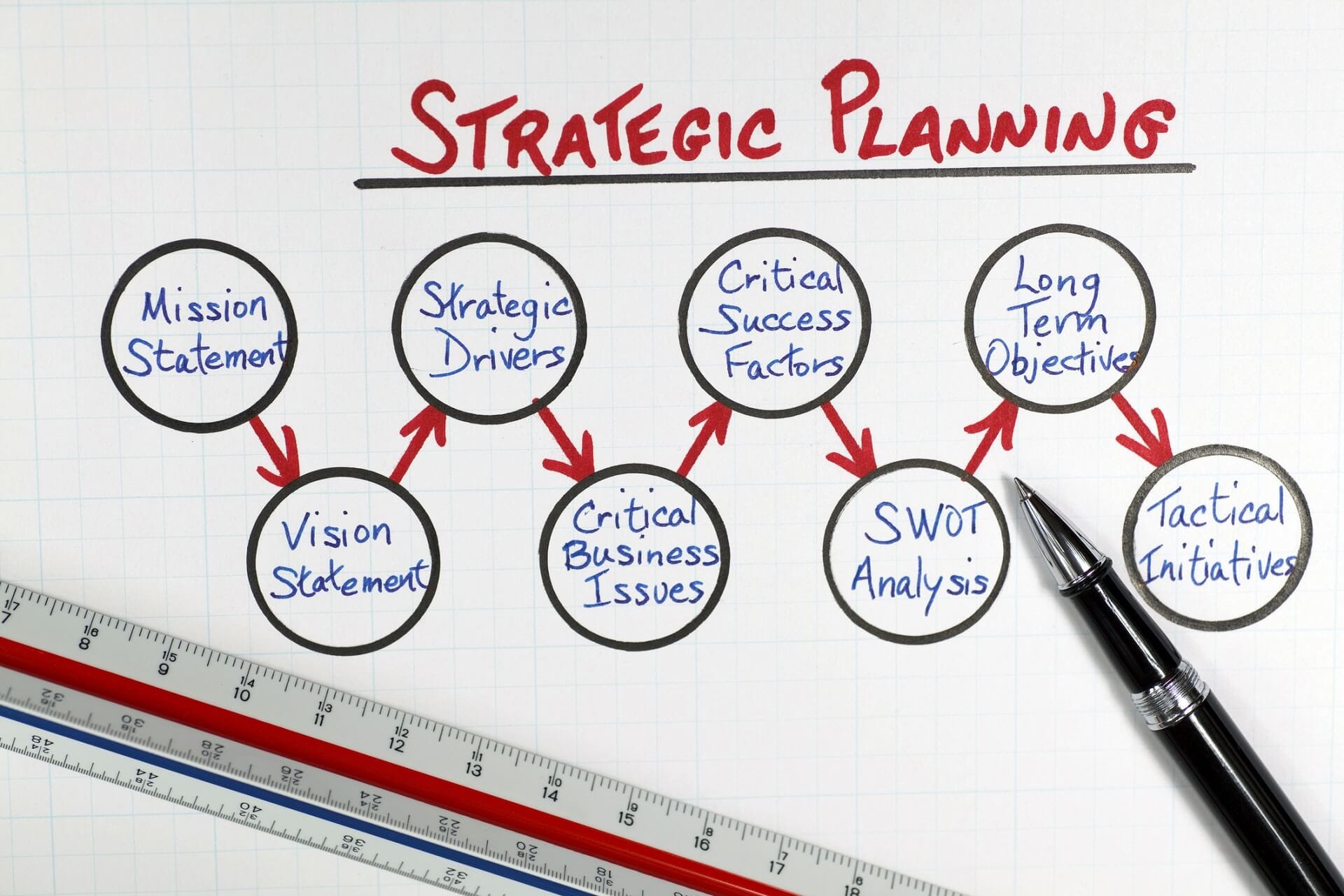Do you know how many factors are constantly impacting businesses and institutions? For now, just imagine a lot of them.
However, we put these factors into two categories to simplify our lives. One type of factor that affects businesses is internal factors. The other type is external factors.
As the name suggests, internal factors are the factors that impact businesses from within. For example, factors linked to management, business finances, innovation, etc., are the internal factors that impact businesses.
On the other hand, external factors are factors such as economic factors, political factors, social factors, etc. These factors are present in the external environment of the business but can impact it.

Businesses can control internal factors and manage their impact by making changes within the business. However, external factors cannot be countered by making changes inside the business.
Businesses have no control over external factors. However, businesses can assess the risk associated with external factors and make strategies accordingly to minimize their negative impact on the business.
Businesses always want to know what internal and external factors impact their operations. However, to do so, businesses apply SWOT analysis. Albert Humphrey made this tool in the 1960s. The SWOT analysis technique is widely used by businesses all across the globe.
So, here's the purpose of the SWOT analysis in a nutshell: A SWOT template helps businesses identify the internal and external factors that impact them. You might be wondering why this technique is called "SWOT Analysis"? Well, the word "SWOT" is an acronym where the letter S represents strengths, and W represents weaknesses. At the same time, O and T refer to opportunities and threats.
A SWOT analysis comprises these four components: strengths and weaknesses are identified as internal factors and opportunities, and threats as external factors that impact a business.
The strengths of any business are the strong points of a business. They refer to the positive attributes of a business due to which it has the upper hand over its competitors. On the other hand, weaknesses are a business's shortcomings that stop it from achieving its true potential.
Opportunities are the chances that lie ahead of any business. These chances are provided by the external environment. In contrast, threats are external factors that can impact a business negatively.
The output of the SWOT analysis can be displayed in various forms. However, the most efficient and effective way to present a SWOT analysis outcome is through a SWOT matrix.
Now that we have discussed what SWOT analysis is in detail let's move ahead and see the purpose of conducting a SWOT analysis.

What Is The Purpose of The SWOT Analysis In General?
SWOT analysis is used by every business. Although this analysis technique was founded in the 1960s, it didn't become obsolete due to its dynamic nature.
Businesses use SWOT analysis for various purposes. In this section, we will discuss the general purposes why businesses use SWOT analysis.
1. To Understand The Current Situation
Businesses want to stay aware of their current situation to make realistic and much-needed policies. To do that, businesses need to deeply understand their current situation.
Businesses assess their situation by conducting a SWOT analysis of their business. SWOT analysis provides a complete snapshot of the company. It makes the business aware of its strengths, weaknesses, opportunities, and threats.
This information helps businesses make informed decisions since SWOT analysis tells them where they stand with respect to the overall market and their competitors.
2. Risk Management
Businesses also use SWOT analysis for the purpose of risk management. Since one component of SWOT analysis identifies the threats a business has to face from the external environment, businesses develop counter strategies against those threats, so they can avoid the risk.
3. Exploring Opportunities
Businesses need to explore the opportunities ahead of them timely so they can make the most out of them. SWOT analysis is also used by businesses to identify opportunities for the business to expand and increase its revenue.
4. Addressing Weaknesses
Another use of SWOT analysis is to identify a business's weaknesses. Businesses identify their weaknesses through SWOT analysis, after which they make strategies to overcome them before their rivals capitalize on them.
5. Identifying Strengths
The purpose of using SWOT analysis is also to highlight the strengths of a business. Looking at their strengths not only motivates businesses but also makes businesses aware of what their strong point is. After realizing their strengths, businesses know what differentiates them from their rivals.

What Is The Purpose of The SWOT Analysis In The Strategic Planning Process of A Business?
SWOT analysis helps businesses in planning and making strategies. This section of the article will look at SWOT analysis to help businesses in strategic planning.
1. Helps In Setting Goals
SWOT analysis helps businesses in setting goals. Since it exhibits the strengths, weaknesses, opportunities, and threats a business faces, it allows businesses to set goals according to the results of a SWOT analysis.
For example, after looking at the result of its SWOT analysis, a business can set future goals to retain its strengths and overcome its weaknesses. Moreover, it can set a goal to capitalize on the opportunities for the businesses and develop strategies to counter threats.
2. Helps In Setting Priorities
With the help of SWOT analysis, businesses can list all the strengths, opportunities, weaknesses, and threats they face.
Within that list, businesses can shortlist and prioritize what areas require the most attention. For example, which weaknesses must be overcome first or which threats must be countered first.
3. Helps In Aligning Resources
SWOT analysis helps businesses align their resources by highlighting the opportunities present for businesses in advance. For example, if a SWOT analysis of a retail business identifies that an opportunity is present for the retail business to establish an e-commerce store.
The business can start aligning its resources in a timely manner; for example, it can hire web developers to establish the business's e-commerce store.
4. Facilitates Communication And Collaboration
The SWOT analysis provides an opportunity for all the stakeholders and departments to communicate and collaborate to work together on the internal and external factors that impact the business.
5. Helps Businesses In Being Adaptive And Flexible
As SWOT analysis highlights the internal and external factors that impact the operations of a business, It makes businesses more adaptive and flexible to change. Businesses reconsider their existing policies and form new strategies to maintain their strengths and overcome weaknesses.
Moreover, SWOT analysis also opens businesses to new ideas that can help them avail themselves of all the available opportunities and mitigate threats.

What Is The Purpose of The SWOT Analysis In Healthcare?
SWOT analysis is one of the few tools any business can apply regardless of its industry. Its purpose is to highlight the internal and external factors that impact an industry or businesses in a specific industry. The Healthcare industry is one of the biggest industries in the world.
In 2018, It was worth $8.45 trillion. The healthcare industry is growing fast, and more companies are entering the industry; this is why healthcare businesses must regularly conduct a SWOT analysis to see what strengths, weaknesses, opportunities, and threats lie ahead for the business.
People often wonder why do companies in the healthcare industry rely on SWOT analysis so much?
The answer to this question is pretty simple. Companies in the Healthcare industry conduct SWOT analysis for the same reasons as any company from any other industry. Following are some reasons why companies in the healthcare industry conduct SWOT analysis.
1. To Improve Their Quality of Products And Services
Businesses in the healthcare industry are very keen to improve their quality for various reasons.
One of the reasons why businesses in the healthcare industry want to improve their quality is because the healthcare industry is highly saturated, so only businesses that provide top services and products can survive in the healthcare industry.
Similarly, governments have tough regulations against substandard products and services in the healthcare industry. Businesses that don't abide by the regulations face serious repercussions.
To avoid that, businesses identify different areas through a SWOT analysis. For example, some areas require improvement. Businesses fix those weaknesses and improve the quality of products and services.
2. Offer Patient-Centered Care
Businesses in the healthcare industry also use SWOT analysis to identify their existing strengths. By doing so, businesses can focus on the areas where they excel. These are the strengths of the businesses. By focusing on the strengths, businesses in the healthcare industry can increase patient satisfaction and loyalty.
3. For Decision-Making
A SWOT analysis provides evidence for decision-making for businesses in the healthcare industry. Since it identifies the strengths, weaknesses, opportunities, and potential threats a business faces, the decision-making process for all the stakeholders within a business gets easy.
4. To Achieve Long-Term Sustainability
As businesses in the healthcare industry get to know the threats that they are facing with the help of a SWOT analysis, businesses develop strategies to counter these threats in advance. By doing so, they achieve long-term sustainability.

What Is The Purpose of The SWOT Analysis In Education?
As mentioned, businesses in different fields conduct SWOT analysis to examine the internal and external factors that impact their operations. Similarly, most businesses and institutions in the education industry conduct a SWOT analysis to get a snapshot of their current operations.
Moreover, the education industry has a lot of competition. To ensure every business succeeds and does not give up its market share, businesses need a reality check in the form of a SWOT analysis.
SWOT analysis highlights businesses and institutions' strengths, weaknesses, opportunities, and threats.
Once these internal and external factors that impact businesses and institutions in the education industry are identified, businesses can use strategies to retain their strengths, overcome their weaknesses, avail all the available opportunities, and mitigate the threats. Now, let's look at different purposes of SWOT analysis in the education industry.
1. For Curriculum Development
SWOT analysis identifies the strengths of businesses and institutions operating in the education industry. Businesses can capitalize on these strengths and develop a curriculum that is aligned with their areas of strength and cater to the needs of students.
2. To Improve The Teaching Methods
SWOT analysis also highlights the weaknesses of the institutions and businesses in the education industry. Once these weaknesses are identified, businesses and institutions have a full opportunity to improve and turn these weaknesses into strengths.
For example, educators can abandon obsolete teaching techniques and adopt the latest and more effective ones.
3. To Adapt The Educational Trends
The SWOT analysis of educators helps them in identifying new trends and teaching methods. Businesses and institutions in the teaching industry can adapt to these new trends and maximize students' experience.

What Is The Purpose of The SWOT Analysis? Final Word
SWOT analysis is a business technique used by businesses across the globe regardless of which industry they belong to. This technique was developed by Albert Humphrey in the 1960s.
The reason why SWOT analysis is still relevant and used by businesses is that it provides businesses a snapshot of their ongoing operations. The word "SWOT" is an acronym for strengths, weaknesses, opportunities, and threats faced by a business.
SWOT analysis highlights both the internal and external factors that impact a business. In this article, we provided you guys an insight into what SWOT analysis is. After that, we discussed the purpose of using SWOT analysis in the strategic planning process of a business.
Moreover, we also discussed why businesses use SWOT analysis in different industries, such as education and healthcare. If you found this article interesting and want to know more about SWOT analysis, here are some SWOT analysis examples.









